Red banners and tea ceremonies: Inside the world of a Chinese wedding planner in Singapore
Despite Western influences, many young Singaporean couples choose to incorporate traditional Chinese customs into their wedding. Lianhe Zaobao senior correspondent Lee Geok Hoon speaks with Jenny Zheng, who has borne witness to marital unions in Singapore for the past 27 years. Beyond her role as a shopkeeper of wedding paraphernalia, Zheng is a guardian to this cultural heritage.
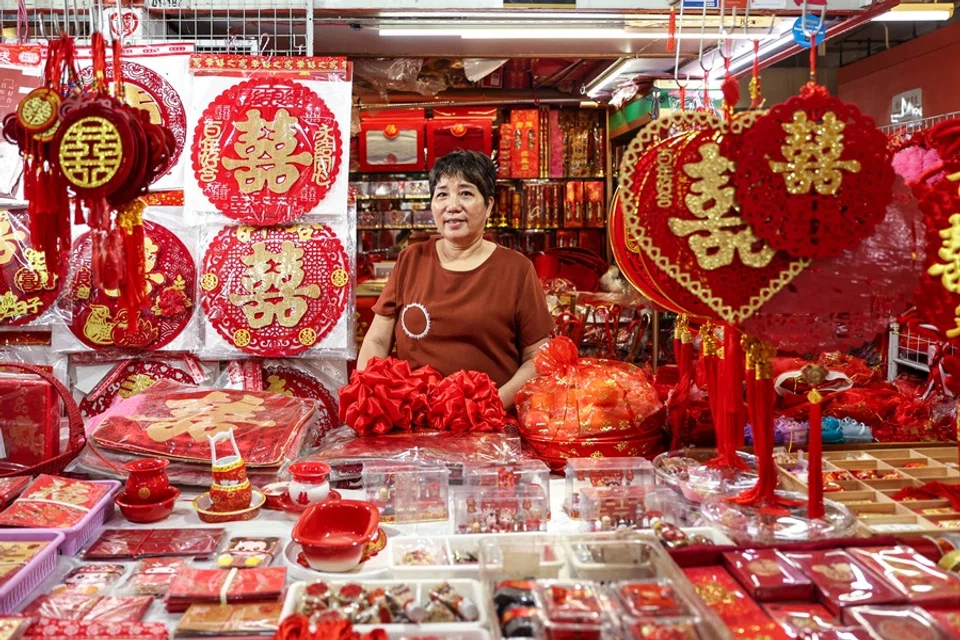
(Photos: Pek Yan Lin/SPH Media)
Stepping into a corner of the first floor of Chinatown Complex in Singapore, the air seems infused with festive hues of red and gold. We have entered a unique world filled with bright red fabrics, vibrant “double happiness” stickers, delicate embroidered balls (绣球, xiuqiu), tea sets painted with gold accents, and shiny red envelopes. It is as if time stood still at a traditional wedding scene. Welcome to K.K Marriage Goods.
When I first met Jenny Zheng, the guardian of this little realm, she was barefaced in simple clothes and busy organising items on the table. She looked up with a reserved expression, clearly unaccustomed to media attention. But when she spoke about her work and the traditional Chinese wedding customs she protects, her eyes lit up, her expression softened, and her voice carried an unmistakable passion and warmth. In that moment, the formality fell away, and a kindred spirit emerged, eager to share her insights.
The products mainly originated from China, including red cloths, betrothal baskets, red door banners, embroidered balls, tea sets and red wooden clogs — everything essential for a traditional Chinese wedding can be found here.
A determined heart
It has been over a quarter of a century since Zheng opened this wedding shop in 1998. The products mainly originated from China, including red cloths, betrothal baskets, red door banners, embroidered balls, tea sets and red wooden clogs — everything essential for a traditional Chinese wedding can be found here. Zheng also plans traditional weddings, rents out traditional wedding attire, and makes customised door banners and table covers, offering a comprehensive one-stop service.
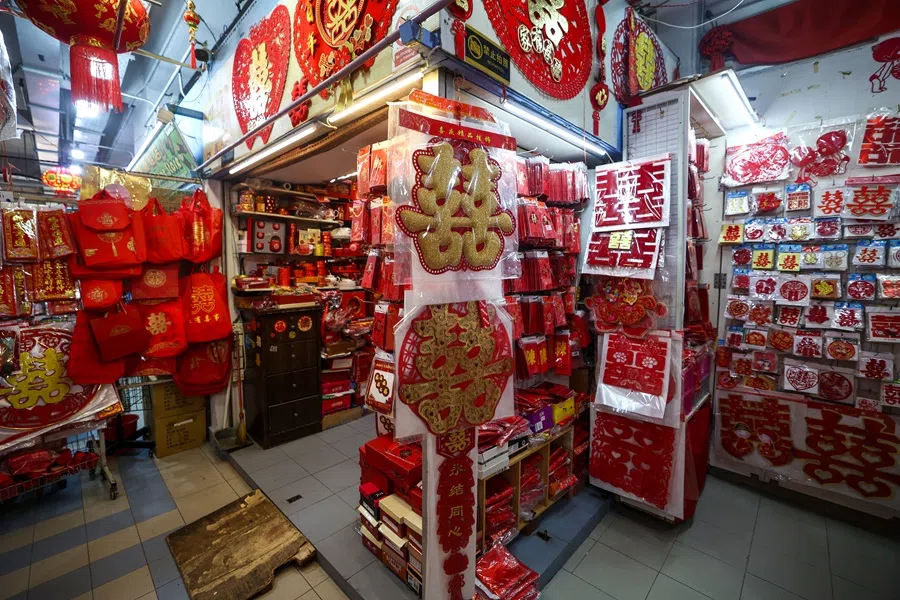
She said with a smile that it was the joy of happy couples that pulled her into the business: “Seeing them smile makes me smile too.” Then, with a bit of self-mockery, she added, “I’ve spent my whole youth right here!”
Zheng boldly left her hometown of Xinghua, Fujian, in 1987 to come to Singapore. Her first job was at an electronics factory, before moving on to become a property agent. But her love for crafts was what led her to the business of traditional Chinese weddings.
Without a mentor, she relied on sheer determination — buying ready-made embroidered balls, taking them apart to study, and figuring out how to improve and make them on her own. She candidly said, “Even if you have a mentor, they may not tell you all their secrets. It’s better to do it yourself.” Her embroidered balls are vibrant and full, reflecting her ingenuity and perseverance.
To her, the most touching part of a traditional Chinese wedding is the tea ceremony. “The tea ceremony reflects the spirit of respecting the old and cherishing the young, symbolising family unity...”
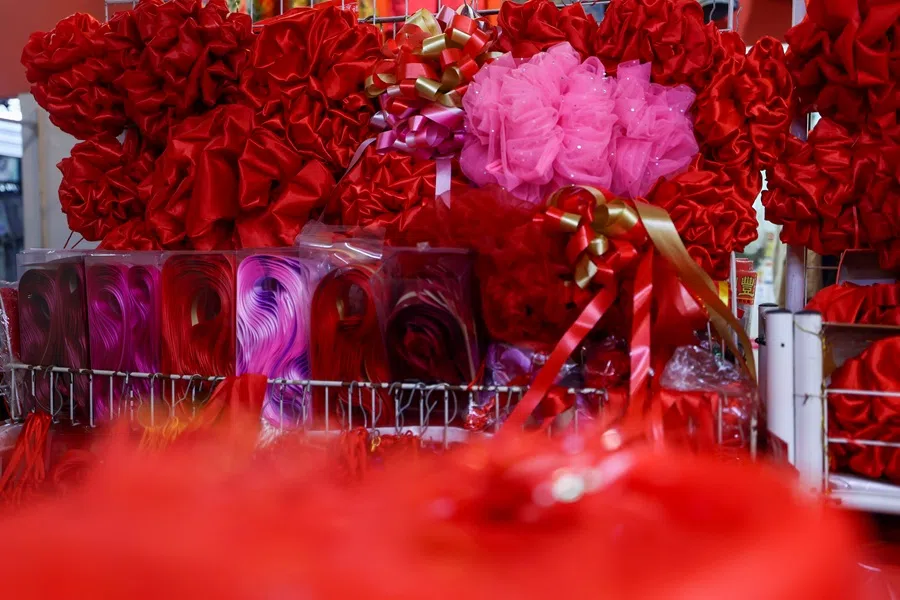
She settled down in Singapore and started a family here. To her, the most touching part of a traditional Chinese wedding is the tea ceremony. “The tea ceremony reflects the spirit of respecting the old and cherishing the young, symbolising family unity,” she said, her tone firm yet gentle, as if recounting a cherished familial memory.
She carefully explained that the tea set must bear the words “double happiness”, which symbolises auspiciousness. Some brides choose to inherit their parents’ wedding tea set, carrying on a sense of warmth and continuity. But the groom’s tea set must always be new and gifted by the bride’s side. “If the bride’s old tea set is linked to an unhappy marriage, it’s better to get a new one for better luck,” she explained.
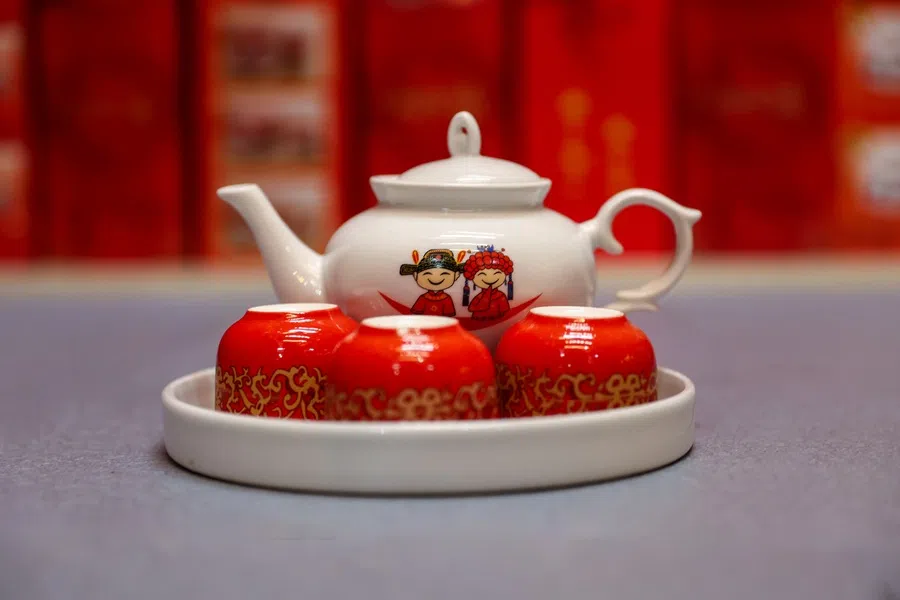
Young people can be very traditional too
Zheng also plans traditional weddings, occasionally acting as a “peacemaker” between the couple and their parents. Influenced by Western education, the younger generation often wants to blend Western elements into the ceremony, while their parents insist on strictly following tradition. She patiently said, “The couple should just do what they’re comfortable with. Otherwise, you end up spending money but causing unhappiness, and both sides get upset.”
What surprised me was how many young couples in Singapore still choose to honour traditional wedding customs. They browse through the wedding shop, gently handling each cherished item, as if hoping to bring a touch of Eastern heritage to this special moment in their lives.
“In some parts of China, weddings focus on luxury car fleets and heavily Westernised decorations. But here, many young couples meticulously follow traditional customs.” — Jenny Zheng
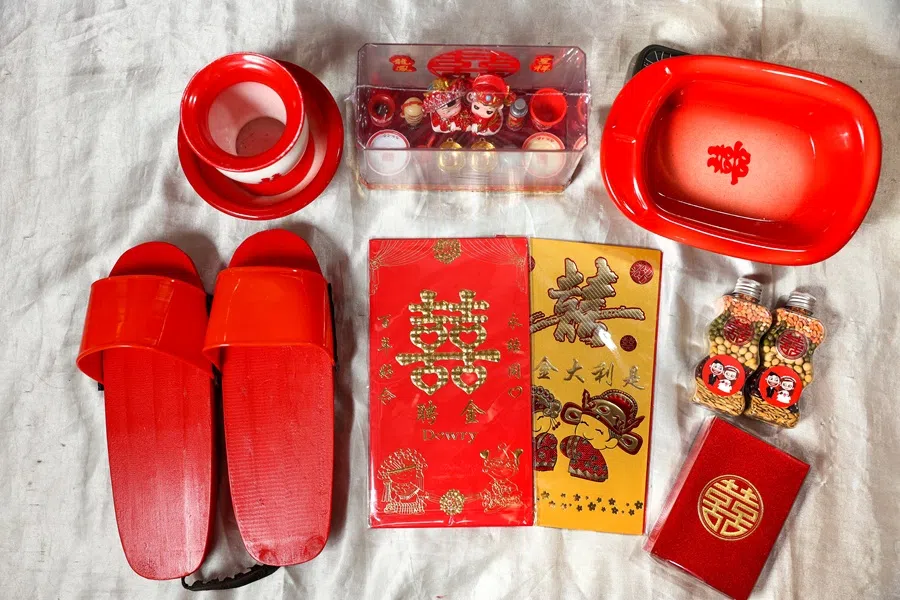
“In some parts of China, weddings focus on luxury car fleets and heavily Westernised decorations. But here, many young couples meticulously follow traditional customs,” said Zheng, a flicker of pride shining in her eyes. She is not just a shopkeeper — she is a witness to weddings, and even a participant in the cultural heritage of families.
Among her clients are both Singaporeans and people from China. She revealed that some young Singaporeans are very traditional, even hanging red banners outside the bride’s home to signal to neighbours that the daughter is now taken.
A planner and a spectator
For 27 years, Zheng’s shop has been like a quiet stage; the red fabrics and tea sets are props, and every couple the main characters of the show. She is both the planner behind the scenes and an emotionally invested audience member. “Seeing them happy makes me happy too,” she repeated her passion for the role.
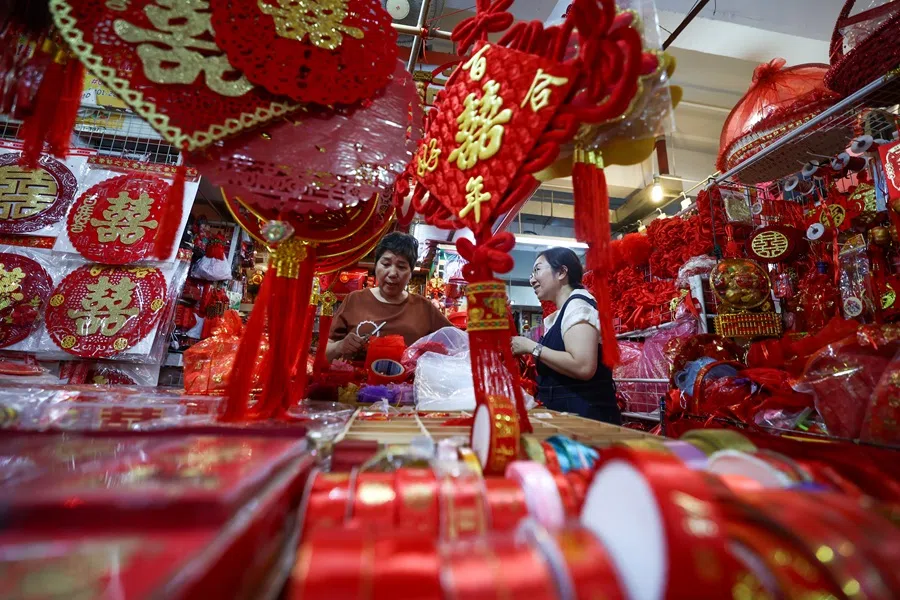
Zheng also sells holiday goods during festive seasons. Year after year, her small shop quietly keeps tradition alive amid the fast pace of modern life. Her story is more than just that of a traditional wedding planner — it reflects the journey of a new immigrant settling in Singapore, preserving culture with care and dedication. Her smile, gentle and warm, carries the festive spirit and a sense of connection that resonates through time.
This article was first published in Lianhe Zaobao as “喜上眉梢27载 她是传统婚俗守护人”.





